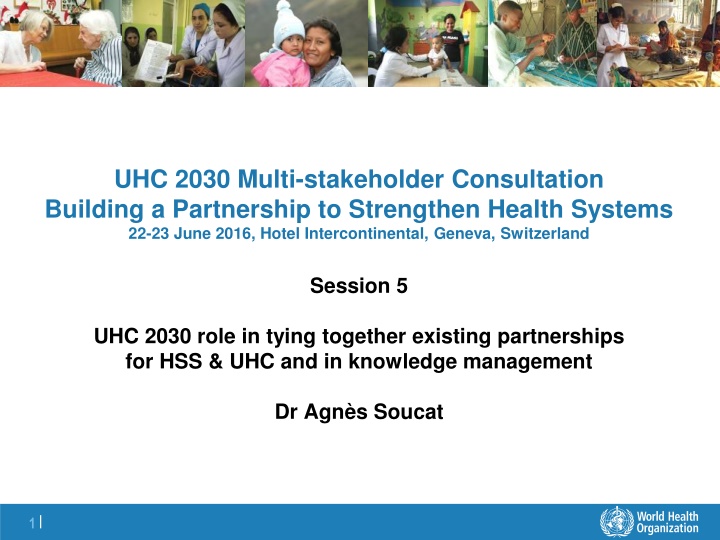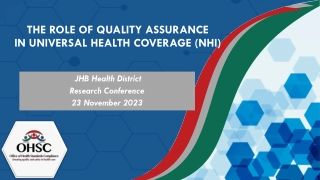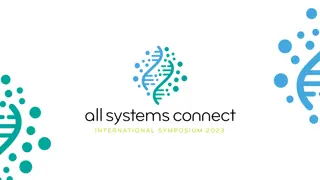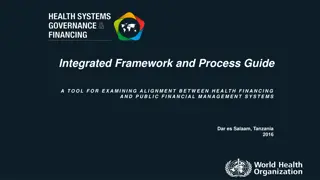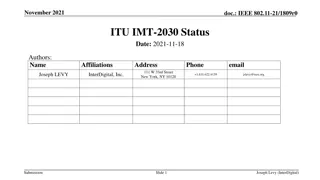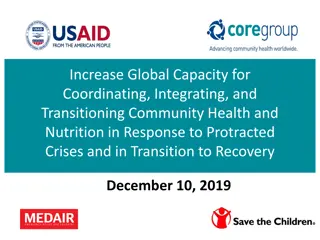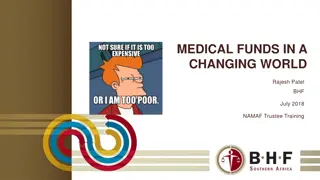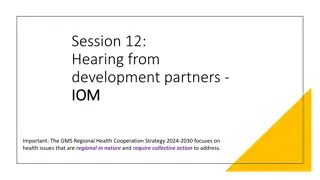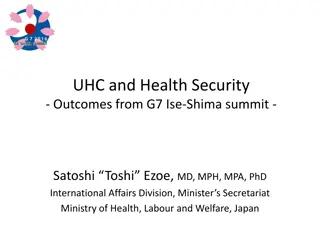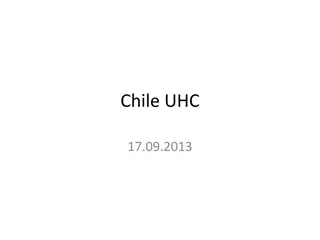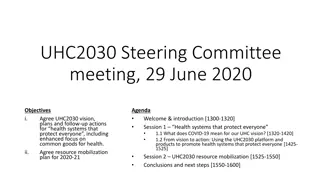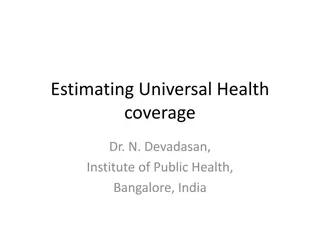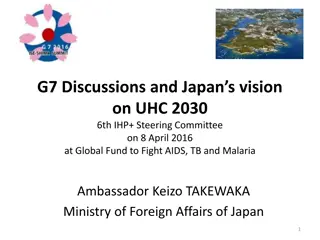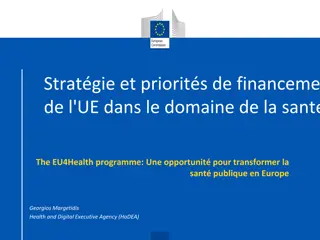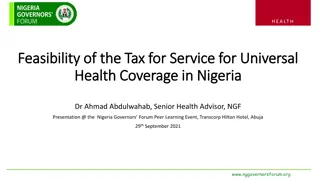Strengthening Health Systems for UHC 2030
Leveraging domestic resources is crucial to attain the SDGs by 2030, with a focus on Health Systems Strengthening (HSS) efforts. Tailored strategies and investments are vital for building strong health systems and achieving Universal Health Coverage (UHC) and health security. The FIT strategy outlines support strategies based on country contexts.
Uploaded on Mar 09, 2025 | 0 Views
Download Presentation

Please find below an Image/Link to download the presentation.
The content on the website is provided AS IS for your information and personal use only. It may not be sold, licensed, or shared on other websites without obtaining consent from the author.If you encounter any issues during the download, it is possible that the publisher has removed the file from their server.
You are allowed to download the files provided on this website for personal or commercial use, subject to the condition that they are used lawfully. All files are the property of their respective owners.
The content on the website is provided AS IS for your information and personal use only. It may not be sold, licensed, or shared on other websites without obtaining consent from the author.
E N D
Presentation Transcript
UHC 2030 Multi-stakeholder Consultation Building a Partnership to Strengthen Health Systems 22-23 June 2016, Hotel Intercontinental, Geneva, Switzerland Session 5 UHC 2030 role in tying together existing partnerships for HSS & UHC and in knowledge management Dr Agn s Soucat 1|
A new WHO Framework for UHC as part of the SDGs 2 |
Health Systems Strengthening is about leveraging domestic resources The minimum additional investment required in the health sector for countries to attain the SDGs by 2030 amounts US$55 billion per year Between US$35-40 billion of these US$ 55 Billion per year must be spent on HSS efforts In 2013, ODA for funding HSS reached US$ 2.3 Billion or only 6% of total ODA for health, whereas funding for disease-specific programs (e.g. fighting HIV/AIDS or malaria) amounted to US$34 billion Even in fragile states, about 75% of total health spending come from domestic sources (95% in middle income countries) However, in most fragile and low income countries OOP is unacceptably high (50% of THE): domestic resources are not optimally distributed Source: Based on WHO s work as part of the Lancet Commission Global Health 2035; WHO analyses prepared for the 3rd FfD Conference and HSS roadmap; Institute for Health Metrics and Evaluation (IHME) estimates for 2013 http://vizhub.healthdata.org/fgh/; WHO Global Health Expenditure Database (GHED) 2013 (http://apps.who.int/nha/database, accessed 15 February 2016) 3 |
Therefore.. The main issue is about channelling funding in the right direction There is a need to strengthen health systems But one size doesn't fit all... => there is a need for a tailored approach => F I T strategy 4 |
FIT for Country Contexts 3 HSS Support Strategies Strategy 1: Building Health system Foundations in least developed and fragile countries Strategy 2: Strengthening health system Institutions in least developed countries where foundations are already in place Strategy 3: Supporting health system Transformation in countries with mature health systems A right combination of essential investments (strategy 1) and software support" (strategies 1 to 3) is needed to build strong health systems and achieve results in UHC and health security 5 |
To this end, alignment is key => the UHC Alliance 2030 6 |
Tying together existing partnerships for HSS and UHC is key 7 |
